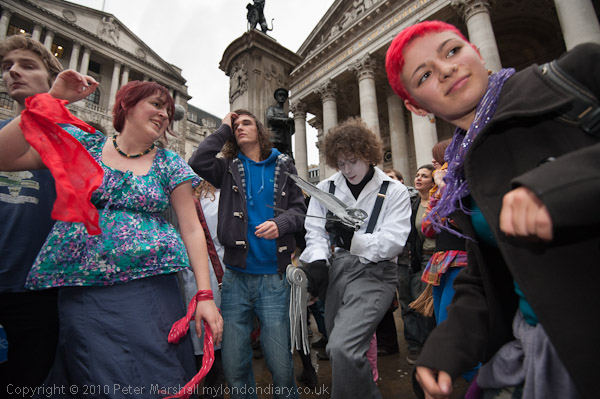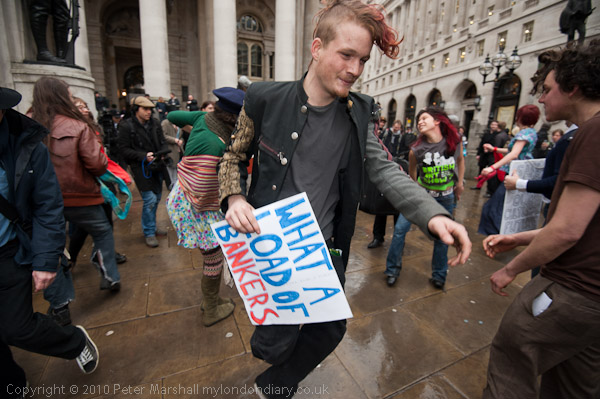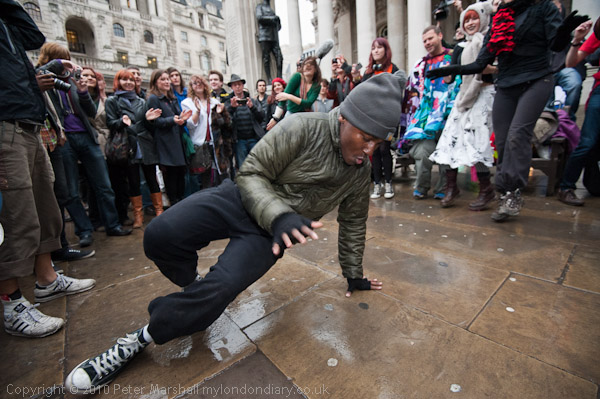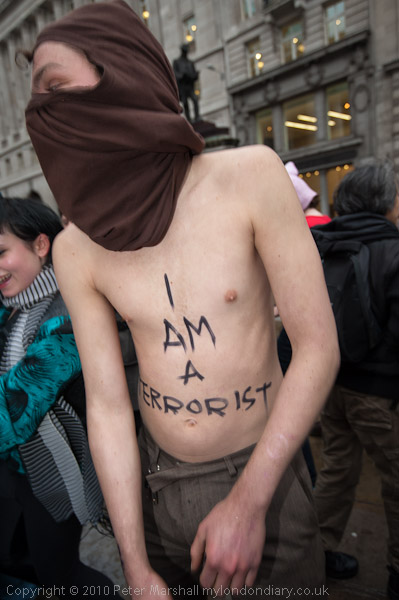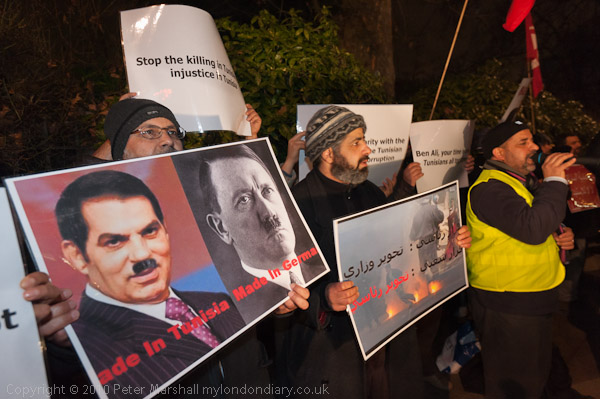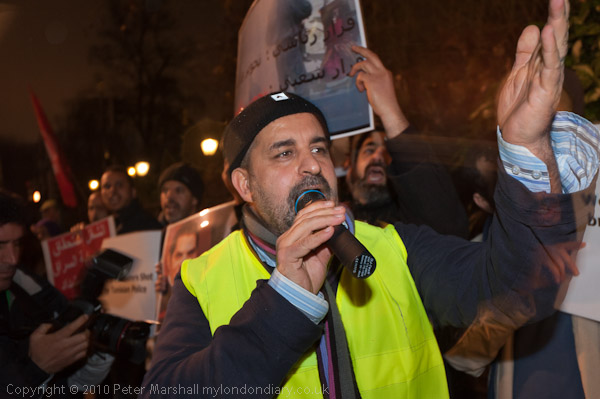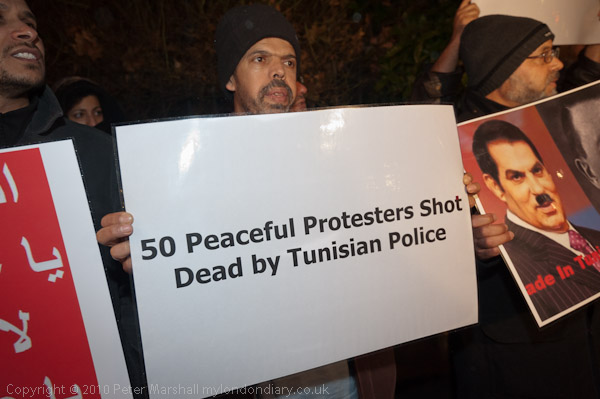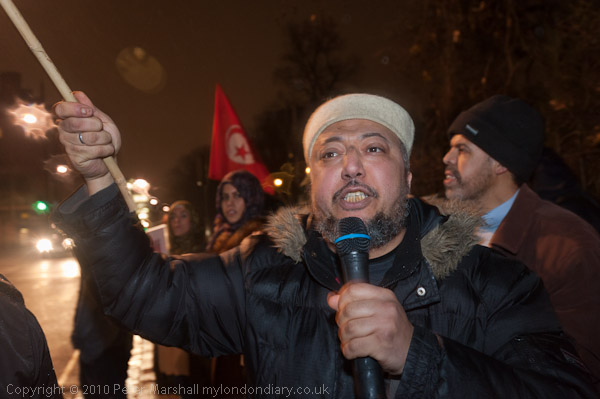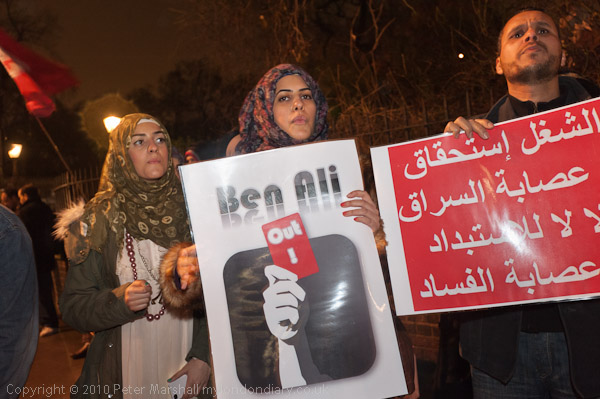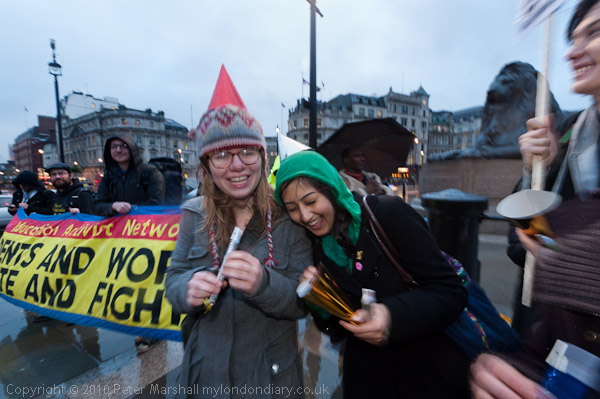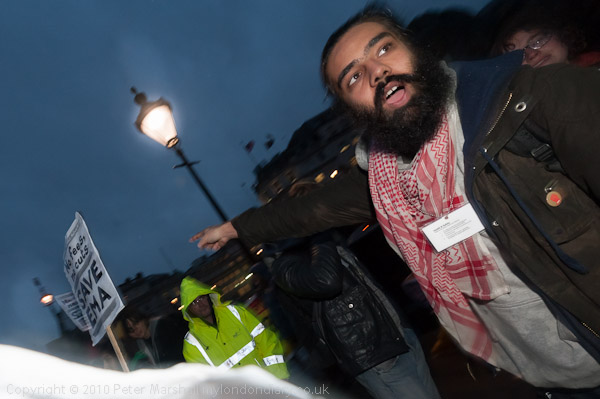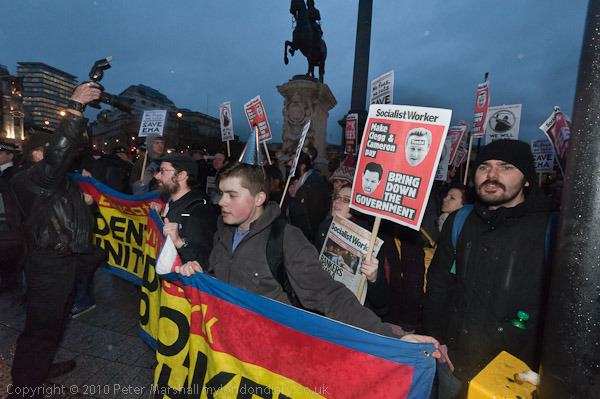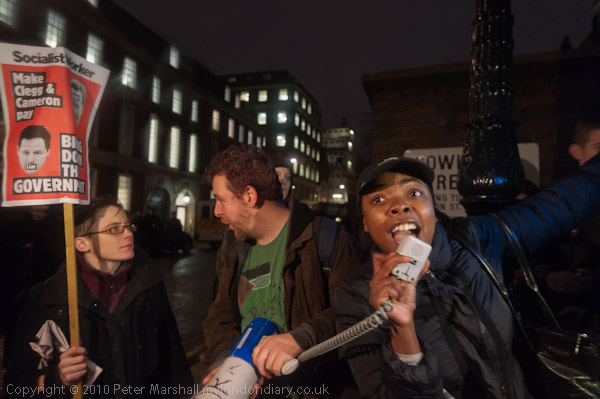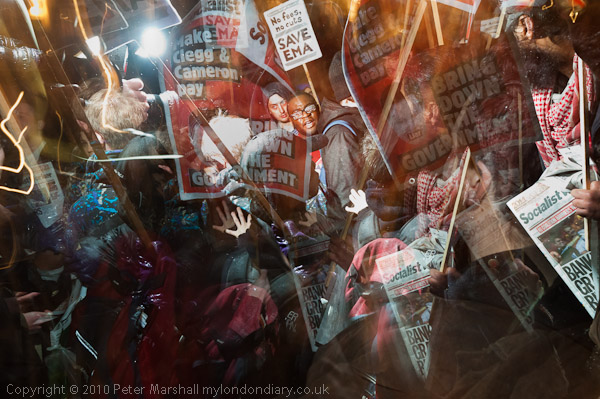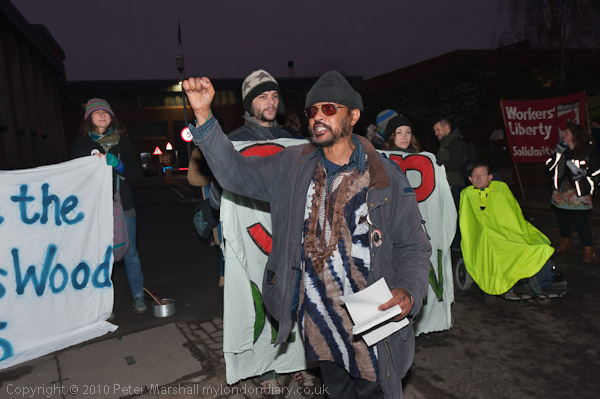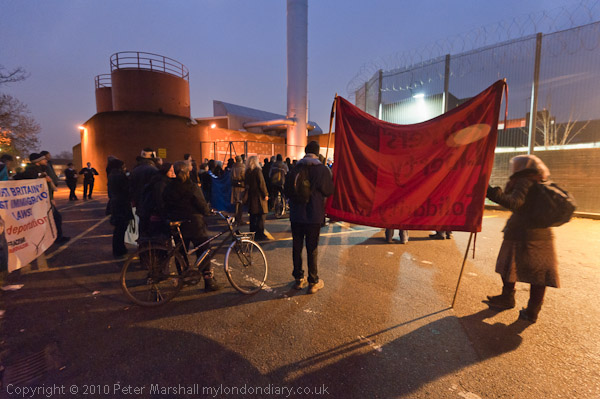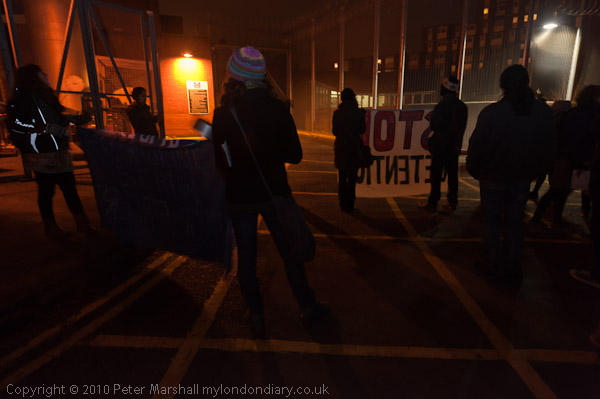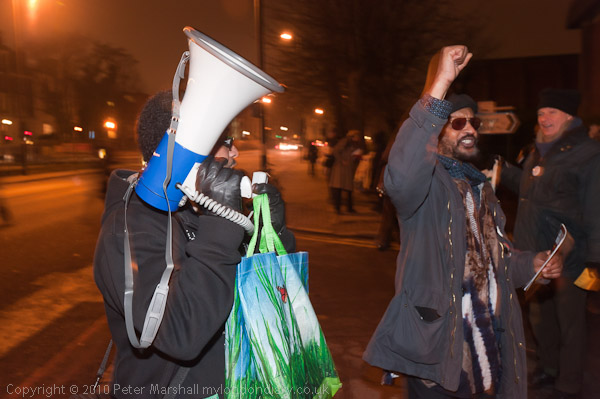On Saturday I photographed my second pillow fight. The first was a couple of years ago, a flashmob in Leicester Square, and was really just for fun, although the pillows were flailed furiously and the air was soon full of feathers and a choking dust.
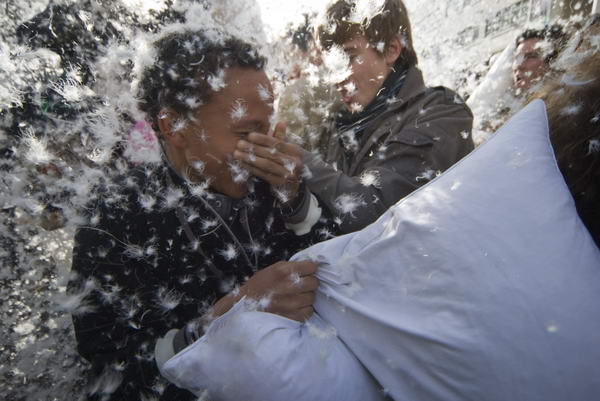
What interested me about that event was that it was part of a global world-wide Global Pillow Fight, and one of the earliest examples of such organisation over the Internet.
Saturday’s protest in Walthamstow was smaller and more sedate, though there did seem to be a few grudge matches taking place, particularly among some families.
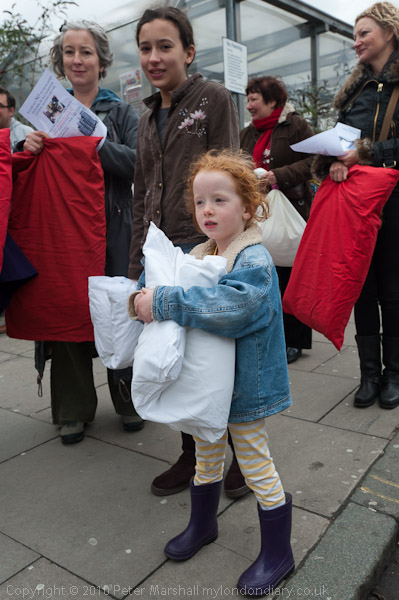
But it was chaotic and fairly short – all over in a little under 4 minutes, and again I longed for a viewfinder that gave a view outside the frame – as in a rangefinder camera. Most of the time I was working close to the fighting (and I did get hit a few times, but fairly gently) with the 16-35mm at its widest end.
Possibly a higher ISO than the 800 I was using would have been better as it was rather dull, and a few pictures were too blurred to use. As often I would also probably have been better working on manual exposure, but I’m getting lazy, and usually prefer to make use of the ‘flexible program.’ The normal program gives speed/aperture combinations that are good for static subjects, but simply by using the thumb wheel you can set a bias either towards smaller apertures (for greater depth of field) or faster speeds to stop action. That bias then remains in force until you alter it with the thumbwheel or switch the camera off.
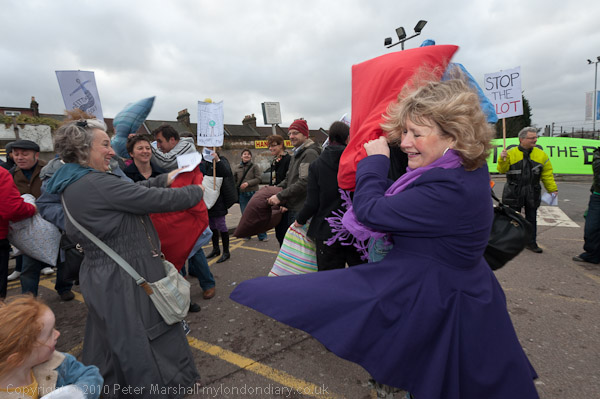
I also opted to use balanced fill flash with the flash unit as usual for me in the hot shoe. Fortunately flash synch is no longer a problem at faster shutter speeds, with auto FP high speed synch kicking in at 1/250 or 1/320 second and faster and normal synch at slower speeds. I think the difference is that with aFPhss the flash always uses a long enough output to cover the whole time the exposure slit is moving across the sensor, while in normal sync shorter flash durations are possible as the flash occurs when the sensor is completely uncovered, but in practical terms there isn’t any visible difference in the results. Presumably using aFPhss drains the battery more, so there is a longer time before the flash has fully recovered for the next exposure.
The SB800 has a reasonably fast recovery, particularly with the rechargeable NiMH cells most of us use, 4 seconds if the flash uses full output when using just the 4 batteries that fit inside the body. Usually using fill flash, it is ready much faster. You get a noticeably snappier response if you add the 5th battery in the ‘Quick Recycling Battery Pack’ but I find it harder to fit the flash into my bag with this attached, as well as more fuss changing batteries – and the spare battery packs hold 4, so carrying 5 means using two containers.
[Incidentally, next time I buy a flash for the Nikon, I wil look carefully at the Metz models which seem to offer similar features at a lower price, and also have upgradable firmware, which may offer some protection against obsolescence.]
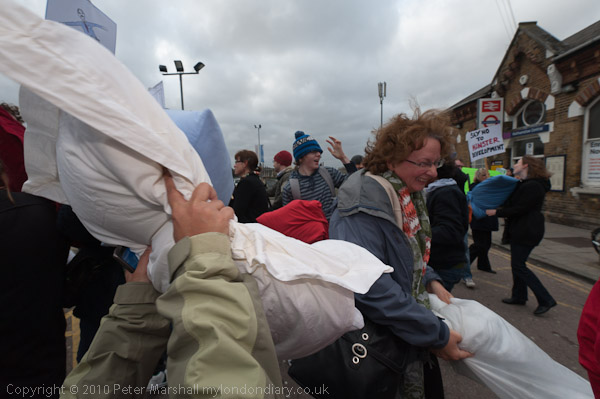
This time the pillow fight was to gain publicity for a campaign against a high rise commercial development where it was taking place. So as well as trying to capture some of the action I also wanted to find images that had some connection with the campaign. There weren’t many people with placards taking part in the fight – it’s hard to swing a pillow and hold one, but I did take a few pictures including them and the banner, as well as trying to get the Victorian station buildings in the background of some of the pictures.
More pictures and more about the event and the campaign in Pillow Fight Against Solum at Walthamstow on My London Diary.
